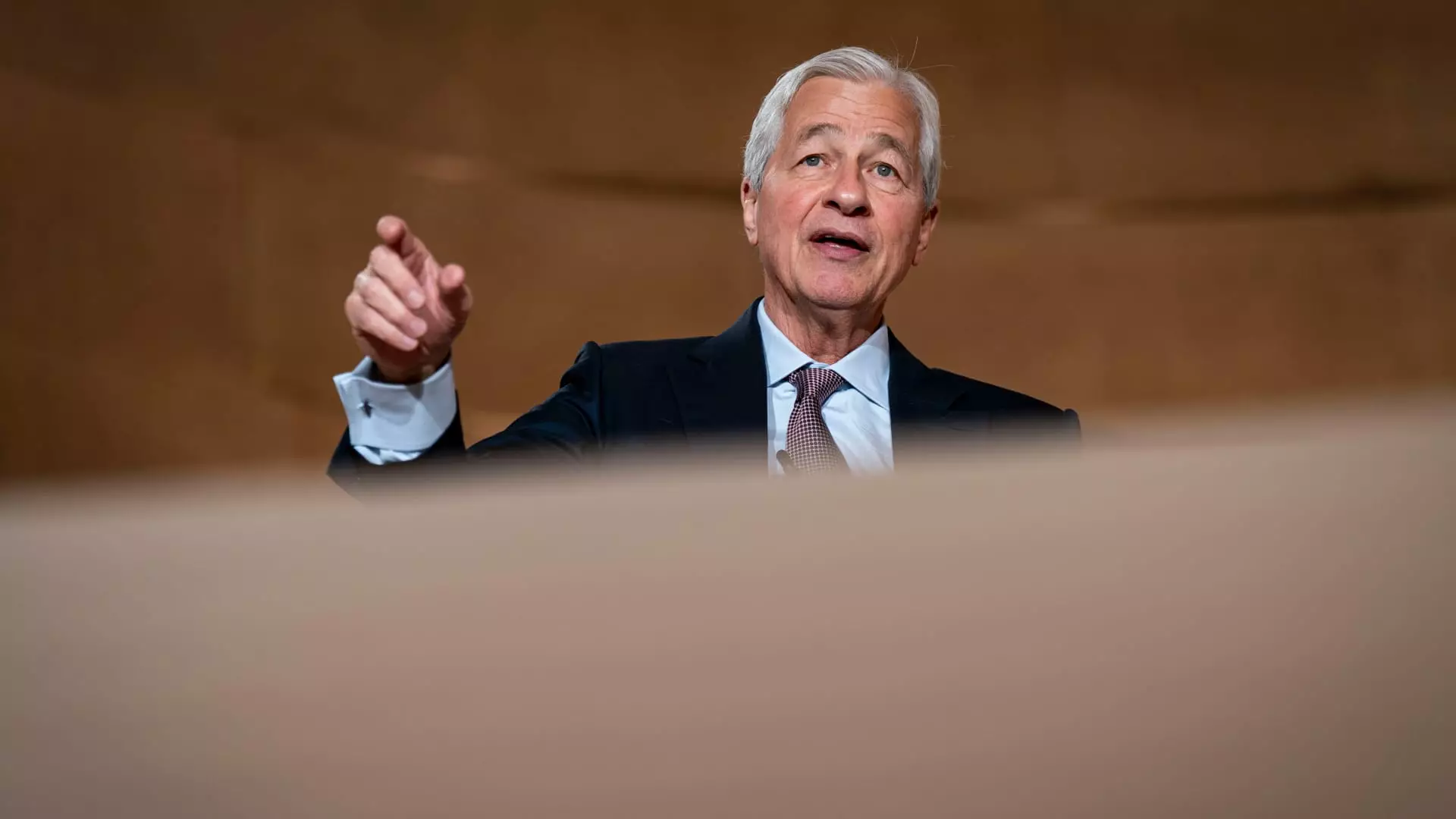In an alarming revelation during the annual investor day of JPMorgan Chase, CEO Jamie Dimon shed light on an unfortunate collective blindness that seems to envelop both markets and regulatory bodies. As he articulated his concerns about America’s record-high fiscal deficits, tariffs, and rising global tensions, it became clear that complacency has taken a precarious hold on economic decision-making. The crux of Dimon’s assertion is straightforward yet profound: a storm is brewing, yet many refuse to recognize the warning signs. It is unsettling to witness how easily market participants have shrugged off significant red flags, prioritizing short-term gains over an acute awareness of the long-term repercussions that these policies could predicate.
Dimon is no stranger to the complexities of global finance. His status as the chief of the largest bank by assets in the U.S. lends an air of credibility to his grim assessments. Yet, rather than eliciting a proactive response, his red flags have been met with apathy in the form of clinging to bullish market sentiments. The resurgence of stock prices, in his view, is not an indication of economic recovery but rather a collective denial of the challenges that loom ahead. The sentiment of optimism that some investors cling to may act as a toxic balm, masking deep-seated vulnerabilities that might soon be laid bare.
Inflation’s Ghost: A Resurgence of Stagflation?
One of Dimon’s most startling claims is that the likelihood of stagflation—a toxic blend of stagnant growth and rampant inflation—far exceeds market estimations. It’s a startling reality, given the historical context of stagflation in the 1970s, a time marked by oil crises and economic malaise. To many, the historical scars of previous economic turmoil have faded into distant memory, leading to a dangerous underestimation of inflationary pressures coupled with uninspiring growth. Dimon’s analysis suggests that prevailing conditions bear striking similarities to those grim days, although many sectors of the economy appear almost wilfully ignorant to this parallel.
The assertion that corporate earnings forecasts may plummet to an untenable 0% growth within six months further heightens the urgency of Dimon’s message. If corporate America braces itself for a reality check, it raises critical questions about the reliability of stock evaluations in the current economic climate. Will investors finally shake off their complacency and reckon with the possibility that a bearish market may be on the horizon? Or will they remain ensconced in a bubble of optimism until the financial reckoning arrives, perhaps too late to adapt?
The Role of Central Banks in Crisis Management
Central banks have long been seen as the stalwart guardians of economic stability. However, Dimon’s critique of their current operational mindset raises grave concerns about their ability to navigate through the turbulence caused by unprecedented fiscal and trade dynamics. Central bank policies, often viewed as a refuge in times of uncertainty, might be failing to mitigate rather than exacerbating the risks of financial instability. It becomes imperative to question whether the current strategies employed can really manage burgeoning debt and actualize sustainable growth.
These concerns are compounded by the echoing sentiments from leaders in the investment banking sector. The pervasive “wait-and-see” mentality among corporate clients serves as a harbinger of storms ahead, signaling hesitation to engage in mergers and acquisitions at a time when decisive action is needed. It raises the specter of hesitation: could this avoidance lead to missed opportunities when drastic changes in sentiment finally grip the markets? It is a perplexing paradox, as businesses remain uncertain while the economy hangs in the balance.
Leadership Transitions in Troubling Times
Another critical dimension of the conversation surrounded Dimon’s own succession plan. Despite his established status, the future leadership of JPMorgan Chase remains nebulous amidst the looming economic uncertainty. The whispers of potential successors indicate a noteworthy shift, yet it begs the question: will the next CEO inherit a minefield or an opportunity for revival? While discussions of leadership transitions often come with a promise of fresh perspectives, they also carry a weight of responsibility in managing the turbulent waters ahead. How equipped will any new leader be to contend with a landscape rife with instability, debt, and stagnation?
As the implications of Dimon’s comments echo across markets, they extend beyond the financial realm and into the broader socio-economic environment. The challenge is not just in recognizing these risks but in mobilizing collective action to confront them. Dimon’s candidness, though inherently destabilizing, serves as a critical call to arms for policymakers and market participants alike to move beyond complacency and adequately prepare for the uncertainty that lies ahead. The time for reactive measures may no longer suffice; proactive strategies, rooted in a realistic comprehension of economic vulnerabilities, must emerge if we desire to avert a crisis of substantial proportions.

